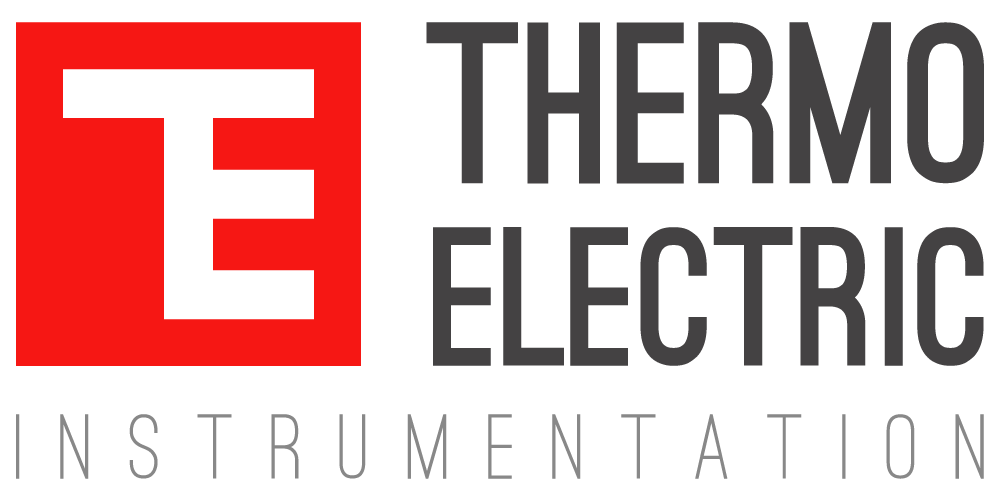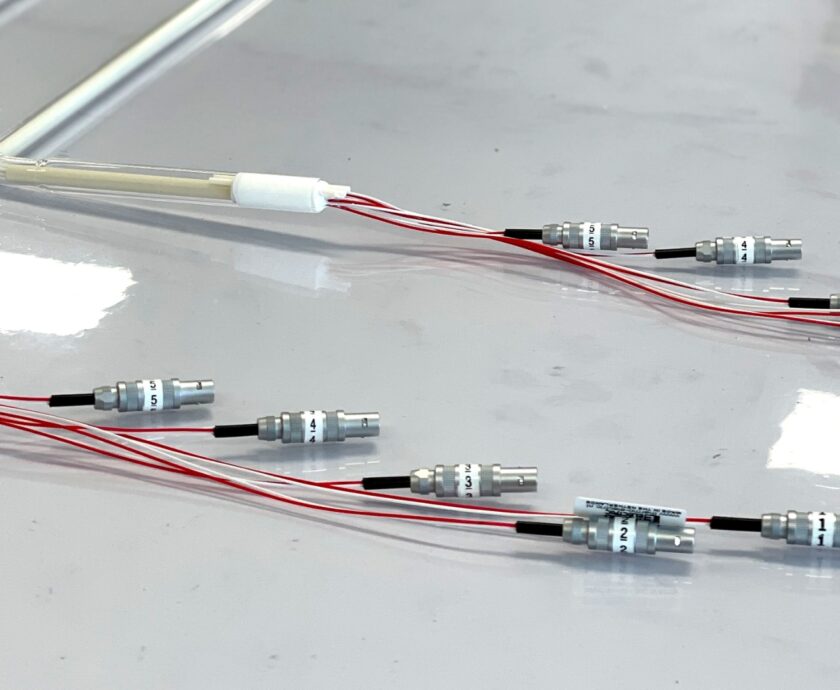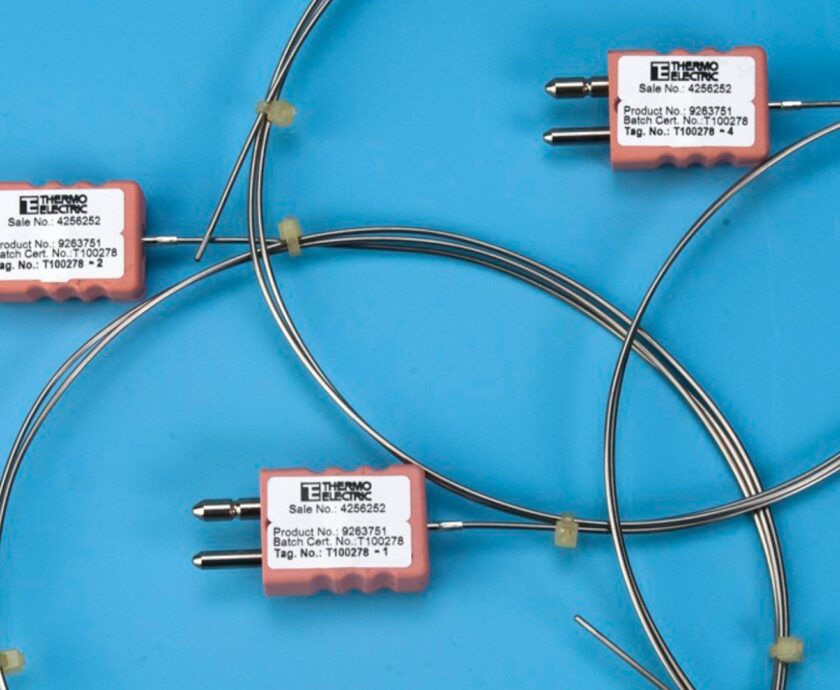With rising energy costs and stringent quality standards, manufacturing and processing operations—where heat plays a significant role—need to explore all avenues to maximize efficiency. One effective strategy for these companies to significantly improve process efficiency is by optimizing the use of temperature sensors.
Understanding Thermocouple Efficiency
Thermocouples generate a voltage proportional to the temperature difference between their junctions. The accuracy and efficiency of their readings, however, depend on various factors, including material selection, junction integrity, thermal conductivity, and maintenance.
Material Selection and Properties of the Thermocouple Wires
Choosing the right thermocouple type is important because each type operates within a specific temperature range and environment:
- K-type: Nickel-Chromium/Nickel-Alumel, suitable for high temperatures and oxidation-resistant.
- J-type: Iron/Constantan, ideal for vacuum or reducing environments.
- E-type: Chromel/Constantan, offers high output in low-temperature environments.
Junction Integrity and Proper Placement
For accurate readings, the thermocouple junction must be carefully placed in the target environment:
- Ensure direct contact between the junction and the surface or medium being measured.
- Use sheathed thermocouples to prevent contamination and corrosion.
Thermal Conductivity and Response Time
Thermal conductivity and wire diameter affect the thermocouple’s response time and accuracy:
- Thin wires respond quickly but are susceptible to electrical noise.
- Sheaths with high thermal conductivity offer faster response but may introduce errors due to heat conduction.
Calibration and Maintenance Procedures
Accurate thermocouple readings require regular calibration and maintenance:
- Calibration: Adjust readings against known temperature standards.
- Maintenance: Inspect for signs of contamination, corrosion, or mechanical damage.
Strategies for Optimization
For thermocouples to reach their full potential, consider the following strategies:
1. Selecting the Right Thermocouple
- Matching Type to Application:
Select a thermocouple type that matches the desired temperature range and environment:- K-type: For general-purpose high-temperature applications.
- J-type: For limited temperature ranges and reducing environments.
- T-type: For extremely low temperatures, particularly in cryogenics.
- N-type: For high-temperature measurements with improved stability.
- Corrosion Resistance and Environmental Suitability:
Assess the operating environment and choose suitable sheathing materials:- Inconel: High-temperature and corrosive environments.
- Stainless Steel: Moderate corrosion resistance.
2. Installation Techniques for Accuracy
- Proper Placement:
Ensure the thermocouple junction directly contacts the target surface or medium. Avoid placing it too close to insulated surfaces, which can cause heat buildup. - Minimizing Heat Loss:
Use appropriate insulation to prevent heat dissipation. Choose sheaths that minimize thermal conductivity errors. - Avoiding Contamination:
Prevent junction contamination by selecting appropriate sheath materials. Seal the junction with welding or soldering where applicable.
3. Calibration and Maintenance Practices
- Regular Calibration:
Schedule periodic thermocouple calibration to maintain measurement accuracy. Use reference thermometers or standard calibration baths. - Proper Cleaning Procedures:
Clean thermocouples regularly to prevent oxidation or corrosion. Avoid abrasive cleaning methods that could damage the sheath or junction. - Recognizing Wear and Tear:
Inspect for mechanical damage, oxidation, or corrosion. Replace thermocouples showing significant wear to prevent inaccurate readings.
Benefits of Optimized Thermocouple Use
Optimizing thermocouple use offers several tangible benefits:
- Improved Process Control
Optimized thermocouples provide precise temperature measurements, allowing tighter process control. - Increased Product Quality and Reduced Waste
Accurate temperature monitoring prevents overheating or underheating, thus reducing waste and maintaining product quality. - Reduced Energy Consumption
Accurate data enables process optimization, reducing energy consumption. - Enhanced Safety
Proper functioning of temperature-sensitive equipment monitored through thermocouples ensures operational safety.
To meet sustainability goals, manufacturing and processing operations—where heat plays a significant role—must explore all avenues to maximize efficiency. By implementing effective strategies such as proper selection, installation, calibration, and maintenance, industries can achieve significant efficiency gains through optimized thermocouple use. This approach offers substantial benefits, including tighter process control, improved product quality, enhanced safety, and reduced energy consumption. Future advancements in thermocouple technology promise even greater precision and efficiency, empowering industries to minimize waste and maximize operational gains. Waste not, want not!
